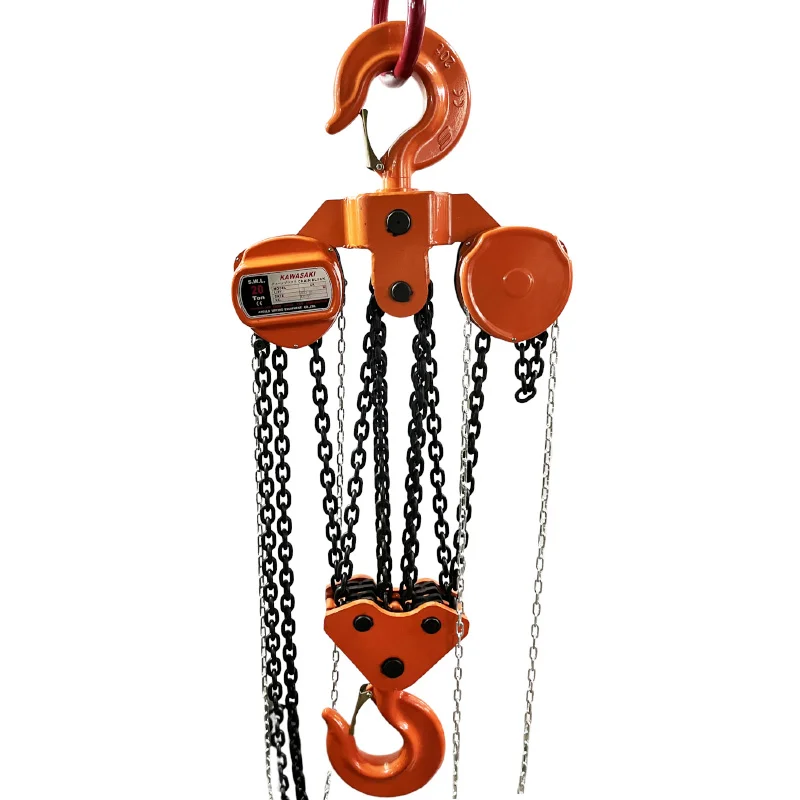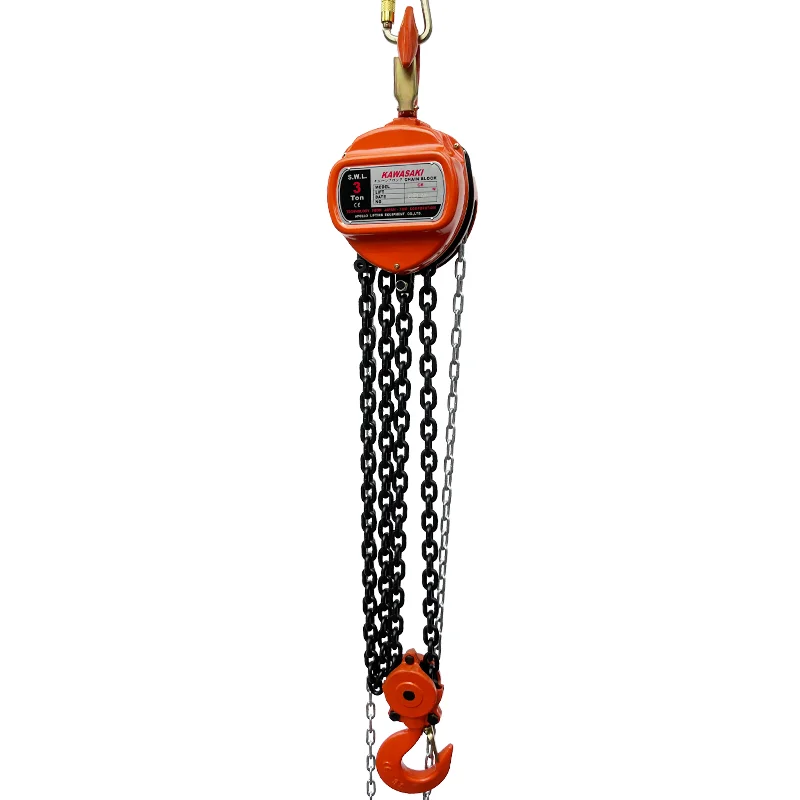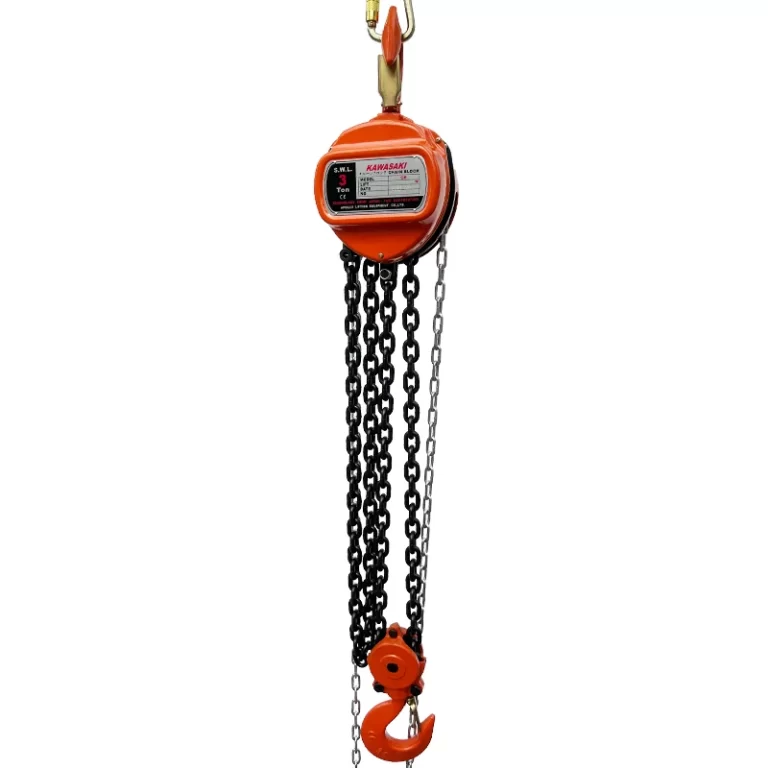Introduction
Walk into a workshop, warehouse, or dockyard, and you’ll probably spot a hand chain hoist hanging quietly on a beam. It doesn’t look flashy, but it does the heavy lifting—literally. A hand chain hoist (sometimes called a manual chain block) is a mechanical device designed to lift or lower loads using human effort and a clever gear system.
For decades, the Kawasaki brand has been trusted worldwide in the hoisting industry. And since 2011, Hangzhou Apollo Lifting Equipment Co., Ltd. has been the only Chinese enterprise authorized to produce Kawasaki brand hoisting machinery. Today, APOLLO has grown into one of China’s leading manufacturers of lifting machinery, with products spanning electric hoists, manual hoists, trucks, jacks, G80/G100 chains, and hardware accessories.
This article takes you through the correct way to operate a hand chain hoist, while drawing on APOLLO’s long experience in lifting technology.
img.What Is the Correct Way to Operate a Hand Chain Hoist.webp
What Is a Hand Chain Hoist
A hand chain hoist is made up of:
- A hand chain you pull by hand.
- A load chain that connects to the item being lifted.
- Two hooks—the top hook for anchoring, the bottom hook for the load.
- An internal gear and brake system that multiplies human force.
Unlike electric hoists, hand chain hoists need no power supply, which makes them reliable even in remote worksites. That’s why you see them not only in industrial plants, but also in shipyards, construction sites, and even agricultural warehouses.
Pre-Use Inspection and Preparation
Most accidents with hoists happen not because the device fails, but because checks were skipped. A few minutes of inspection can save hours of trouble.
Check Load Capacity
Every hoist has a rated capacity. APOLLO’s manual chain hoists are available from 1 ton to 20 tons. Always match the hoist to the load. If your steel beam weighs 3 tons, don’t gamble on a 2-ton hoist—it’s not worth the risk.
Inspect Components
- Hooks: Look for cracks, bends, or missing safety latches.
- Chains: Surface treatment matters. APOLLO provides chains with options such as electro-galvanized, nickel-plated, or blackened finishes, giving extra durability in different environments.
- Brake system: Test the mechanism by pulling the hand chain slightly without load; it should lock instantly.
Verify Anchor Point
Anchor the top hook to something solid: an I-beam, a trolley, or a certified lifting frame. Never attach it to scaffolding or pipes—sounds obvious, but shortcuts happen, and they rarely end well.
Step-by-Step Operation
Attach the Hoist to the Anchor
Hang the top hook securely and check the latch. A missing or weak latch is a stop signal.
Secure the Load
Hook the bottom hook to the load, often with slings or shackles. Balance is critical: when lifting a machine motor, for example, sling it at multiple points so it stays level.
Lift by Pulling the Hand Chain
Pull the hand chain smoothly. The internal gears—hardened and quenched for strength in APOLLO models—multiply your effort. The load rises steadily with each pull.
Hold or Lower the Load
Once you stop pulling, the automatic brake holds the load in place. To lower, pull in the opposite direction. Keep the motion slow and steady to avoid dangerous swinging.
Safety Precautions
- Never exceed rated capacity. Even a little overload stresses the mechanism.
- Stay clear of suspended loads. Don’t walk or work under a hanging object.
- Use guide ropes. If the load swings, control it from a distance.
- One operator only. Two people yanking the same chain won’t speed things up.
Post-Use Maintenance and Storage
Like any tool, a hoist lasts longer with care.
Clean after use. Dust, cement, or metal shavings can jam the brake. One customer in Southeast Asia lost two days of production because cement dust built up inside the housing.
Lubricate chains and gears. A drop of oil goes a long way in reducing wear.
Store dry. Hang the hoist in a clean, dry place. Moisture leads to rust, and rust shortens life.

Understanding the Mechanism
Inside the hoist, a system of gears creates mechanical advantage. You pull a light chain, and the gears transfer and multiply the effort to the load chain. That’s why one worker can lift several tons without machinery.
APOLLO hoists go further:
Optional 360° operation for easier positioning.
Overload protection to prevent misuse.
Customizable finishes for marine, stage rigging, or industrial use.
This combination of engineering and customization reflects APOLLO’s commitment to “precision manufacturing, quality first.”
Hand Chain Hoist vs Lever Hoist
Hand chain hoists are best for vertical lifting and static heavy loads. Lever hoists, with their ratcheting handle, are better for pulling or adjusting loads in horizontal or angled positions.
Both have their place, which is why APOLLO manufactures manual chain hoists and lever hoists—so clients can choose based on application, not compromise.
Conclusion
Using a hand chain hoist correctly isn’t complicated. Inspect the hoist, secure the anchor, attach the load, lift smoothly, and maintain it afterward. That’s the rhythm. When operators cut corners, risks multiply fast.
From logistics warehouses in Singapore to construction sites in Malaysia and ports in Korea, APOLLO hoists carry the same reputation: safe, durable, and reliable. As the only authorized Chinese producer of Kawasaki brand hoisting machinery, APOLLO continues to uphold strict quality standards, backed by ISO9001 and CE certifications.
The correct way to operate a hoist, in the end, is not just about technique—it’s about discipline, respect for the load, and trust in a tool built to do the job right.
FAQs
Q1: Can one person operate a 3-ton hand chain hoist?
A: Yes, as long as the hoist is rated for 3 tons and well maintained. It takes effort and time, but the gear system makes it possible.
Q2: How often should I service my APOLLO hand chain hoist?
A: Lightly lubricate the chain weekly if used daily. A more thorough inspection every few months is recommended, especially in humid or dusty environments.
Q3: Are APOLLO hand chain hoists suitable for outdoor use?
A: Yes. With customizable finishes—such as galvanized for marine yards or blackened chains for stage rigging—APOLLO hoists adapt well to outdoor and specialized environments


